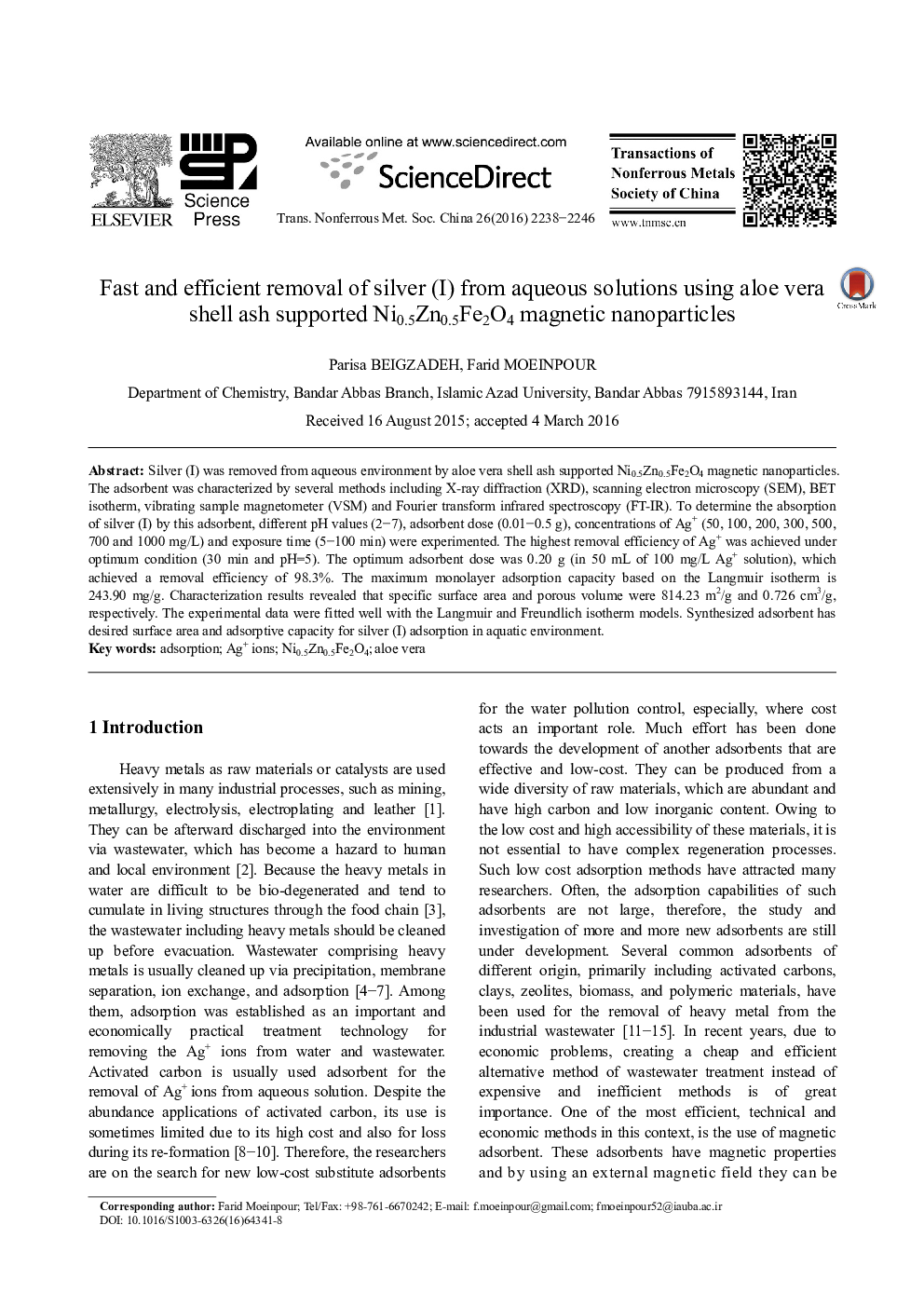| Article ID | Journal | Published Year | Pages | File Type |
|---|---|---|---|---|
| 8012284 | Transactions of Nonferrous Metals Society of China | 2016 | 9 Pages |
Abstract
Silver (I) was removed from aqueous environment by aloe vera shell ash supported Ni0.5Zn0.5Fe2O4 magnetic nanoparticles. The adsorbent was characterized by several methods including X-ray diffraction (XRD), scanning electron microscopy (SEM), BET isotherm, vibrating sample magnetometer (VSM) and Fourier transform infrared spectroscopy (FT-IR). To determine the absorption of silver (I) by this adsorbent, different pH values (2-7), adsorbent dose (0.01-0.5 g), concentrations of Ag+ (50, 100, 200, 300, 500, 700 and 1000 mg/L) and exposure time (5-100 min) were experimented. The highest removal efficiency of Ag+ was achieved under optimum condition (30 min and pH=5). The optimum adsorbent dose was 0.20 g (in 50 mL of 100 mg/L Ag+ solution), which achieved a removal efficiency of 98.3%. The maximum monolayer adsorption capacity based on the Langmuir isotherm is 243.90 mg/g. Characterization results revealed that specific surface area and porous volume were 814.23 m2/g and 0.726 cm3/g, respectively. The experimental data were fitted well with the Langmuir and Freundlich isotherm models. Synthesized adsorbent has desired surface area and adsorptive capacity for silver (I) adsorption in aquatic environment.
Related Topics
Physical Sciences and Engineering
Materials Science
Metals and Alloys
Authors
Parisa BEIGZADEH, Farid MOEINPOUR,
